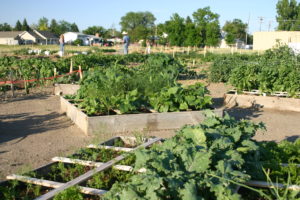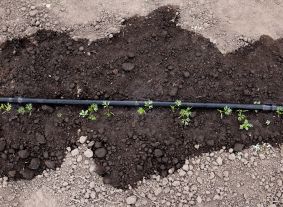Planting in Raised Beds
Views: 5124

You’ve seen them in your neighborhood or in urban areas, these boxes that raise the plants they contain several feet off the ground. Welcome to the wonderful world of raised beds. But what purpose do they serve, and more importantly, why bother?
Less kneeling, bending, and lifting
First, if you have a plot of land that is tillable and brings forth life, good for you. Doubly good for you if you are spry and can touch your toes (or even your knees) without a second thought. For many gardeners and would-be gardeners, these two factors prevent them from either installing a garden or continuing gardening as their joints or health succumb to age or illness. A raised bed affords these two groups an opportunity to get their hands dirty with gardening activities.
Let’s first discuss the benefits to those having health or joint issues. If you’re a traditional in-ground gardener, you know there’s no end to kneeling, bending, and lifting as you tend your plot. Imagine the pain or discomfort these gardening movements cause to folks who are experiencing issues with aging, arthritis, or health problems that cause shortness of breath and stamina. It’s enough to prevent a longtime gardener to give up one of their favorite activities.
A raised bed brings the garden up to the gardener. At 2.5- to 3.5-feet tall, the plants are that much higher, requiring much less bending and essentially eliminating the need to bend. For folks relying on a device to help them walk and stand, a raised bed is a godsend.
No tillable land? No problem.
Let’s address the tillable land issue. I’m talking about people whose only open space doesn’t even give way to a shovel—either because its too rocky, too compacted, or it is an urban brick or cement patio. A raised bed puts soil where inadequate soil or no soil is available. A raised bed becomes a garden in a box, or a super-sized container.
There’s one more issue regarding soil. Let’s say your ground is contaminated with toxic materials or is the site of previous activities you just don’t feel comfortable with. Because you create a raised bed from the ground up, you fill it with soil that you’ve either purchased or obtained from a reputable source. No worries about then growing toxin-filled veggies. You’ve got the good stuff.
However, there are several other benefits to growing a garden up off the ground.
Warmer, cleaner soil in Raised Beds.
The soil warms up sooner in spring, letting you then get an extra crop of peas or have bragging rights for the earliest ripe tomatoes in your neighborhood. The soil stays warmer at the other end of the season, too, extending the garden’s productivity. Weeds are less of a problem because when you begin with weed-free soil, you can more easily see weeds hiding under leaves, and those pesky tunneling weeds cant creep in from the outside.
And because you don’t need to place paths between your rows of veggies, you can then place your plants closer together, increasing the amount of produce you receive from each square foot. In fact, because the plant life is that much closer to your eyes, you’ll find yourself caring for your highrise of plants that much more of a watchful eye. A raised bed may just be the best garden you’ve ever planted.
Meet Ellen Wells
When you’re raised on a farm, you can’t help but know a thing or two about gardening. Ellen Wells is our expert on edible gardening.…
Ellen's Recent Posts

Asparagus






